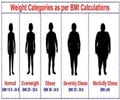Ageing and body mass index could indicate onset of gallstones in both men and women.
Ageing and body mass index could indicate presence of gallstones in both men and women. In men there were additional risk factors like diabetes, liver cirrhosis, peptic ulcer and coronary disease, low levels of HDL and total cholesterol, and high levels of triglycerides.
Triglycerides are a type of fat found in our blood. Hormones release triglycerides for energy between meals. If you regularly eat more calories than you burn, you may have high triglycerides (hypertriglyceridemia). Apparently gallstones could result from such an accumulation.Gallstone disease is a very common gastrointestinal disorder: in fact it has been documented that more than 14% of adults are, or have been, affected by this disease. Therefore, gallstones are a major public health problem, and this disorder is one of the most common and costly of all digestive disease, at least in the Western World.
In fact in terms of inpatient physician services and hospital costs, gallstone disease is by far the most costly digestive disorder, the bulk of the economic burden is mainly due to the surgery. For cholecystectomy, surgical removal of the gall bladder, is considered the treatment of choice for symptomatic gallstones.
However, since the introduction of laparoscopic cholecystectomy into clinical practice at the end of 80s, a possible unjustified increase in surgical procedures has been observed. probably due to changes in the perceived risk-benefit ratio (for patients and physicians) and changes in surgical indications. Therefore, there is the need for more knowledge of the epidemiological characteristics of GD in order to better identify therapeutic strategies.
A research article to be published on September 14, 2008 in the World Journal of Gastroenterology addresses this question. The research team led by Prof. Davide Festi of the University of Bologna has performed the second phase of an epidemiological project (the MICOL project) which is a population-based, cross-sectional study carried out in 8 Italian regions by different operative units.
The project plan includes 2 cross-sectional surveys; the first began in 1985 and was completed in 1988 and the second survey was carried out on the same subjects 10 years later in order to estimate the incidence of gallstone disease. Incidence rate was 0.67% per year, higher in females (0.81%) than in males (0.66%) and it increased with age.
Advertisement
This study has provided data on the incidence, risk factors and clinical manifestations of gallstone disease on a large free-living population. These results may help physicians in clinical decision making, particularly in choosing between different therapeutic strategies (i.e "wait and see", medical treatment, surgical therapy) and in interfering with the risk factors, in particular those related to an unhealthy life style, such as an increased BMI.
Advertisement
Source-Medindia
GPL












